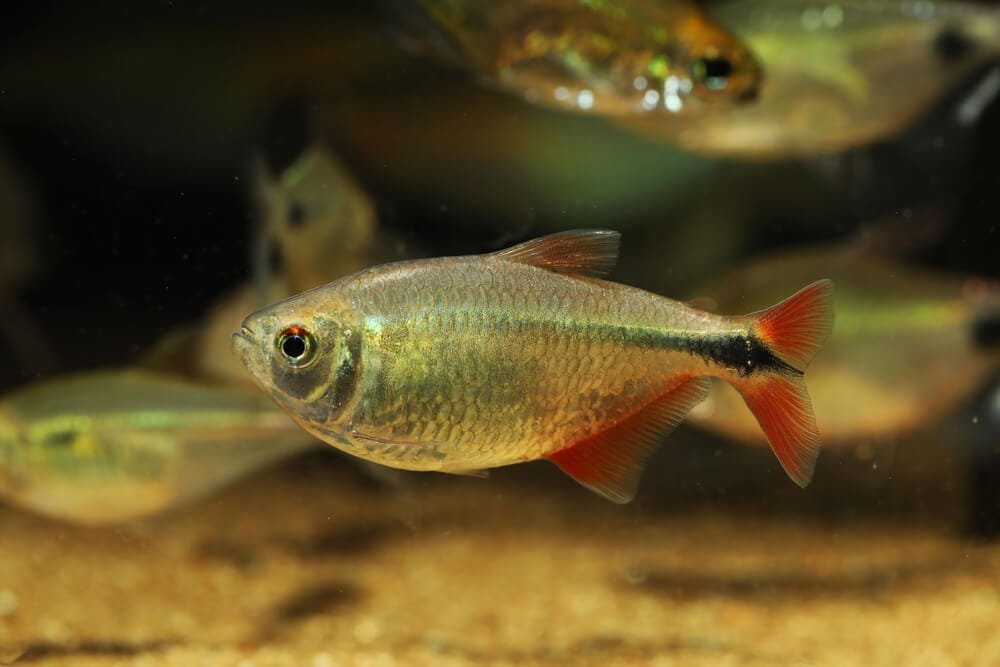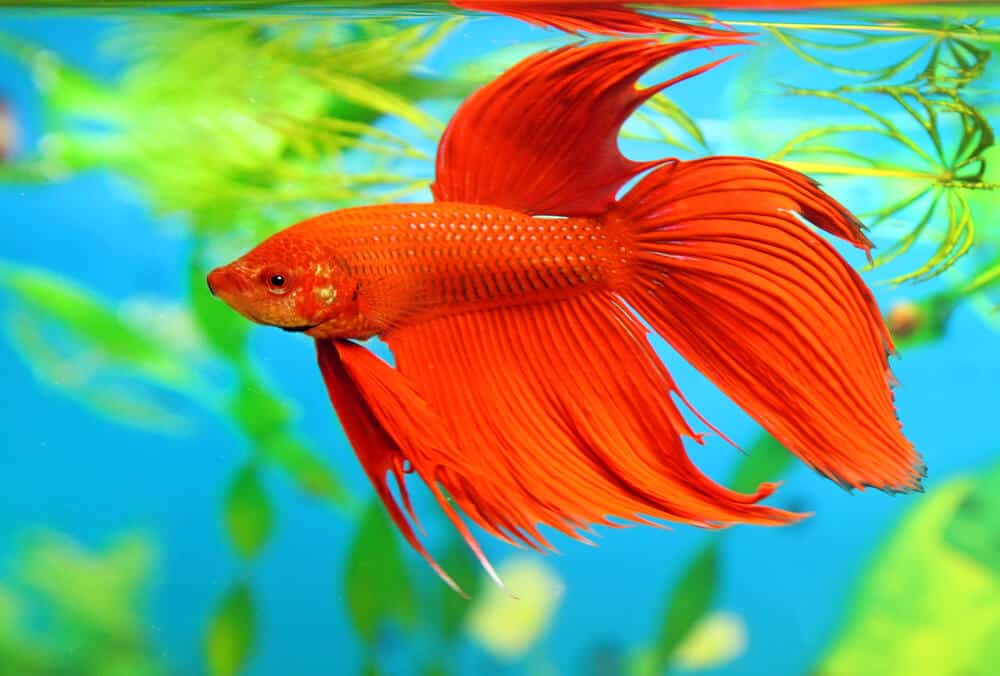Imagine a fish that is as colorful and vibrant as the bustling city it’s named after. Enter the Buenos Aires Tetra, a stunning freshwater fish known for its striking red, black, and silver coloring. With its captivating presence and easy-to-care-for nature, this fish is the perfect addition to any aquarium. Join us as we take a closer look at the Buenos Aires Tetra and discover what makes it such a popular choice among fish enthusiasts.
Physical Appearance
Size
The Buenos Aires Tetra is a small fish, typically reaching a size of about 2.5 inches (6.4 cm) in length when fully grown. This makes them a great choice for smaller aquariums or community tanks.
Coloration
These fish are quite impressive in terms of coloration. They have a silver body with a bright red patch on their head, extending to their dorsal fin. Additionally, they have black vertical stripes running along their body. The combination of these colors gives them a striking appearance that is sure to catch anyone’s eye.
Habitat and Distribution
Native Range
The Buenos Aires Tetra is native to South America, specifically Argentina, Uruguay, Paraguay, and parts of Brazil. They are typically found in slow-moving rivers, streams, and flooded areas with dense vegetation.
Introduced Range
Due to their popularity in the aquarium trade, Buenos Aires Tetras have been introduced to various parts of the world. They can now be found in North America, Europe, and Asia, where they have established populations in suitable aquatic habitats.
Behavior
Social Behavior
Buenos Aires Tetras are known for their social nature and thrive when kept in groups of six or more. They are generally peaceful and get along well with other non-aggressive fish species. However, they may display some fin nipping behavior towards fish with long and flowing fins.
Feeding Behavior
These tetras are omnivorous and will readily accept a variety of foods. They are particularly fond of small insects, worms, and plant matter. In the aquarium, they should be fed a balanced diet consisting of high-quality flake or pellet food, supplemented with live or frozen foods like bloodworms and brine shrimp.
Reproduction
Buenos Aires Tetras are relatively easy to breed in captivity. They are egg scatterers, meaning they release their eggs freely in the water. To encourage spawning, a separate breeding tank with dense vegetation and fine-leaved plants is recommended. The female will scatter her eggs among the plants, and the male will fertilize them. After spawning, the eggs should be removed from the breeding tank to prevent the adults from consuming them.

Tank Requirements
Tank Size
For a small school of Buenos Aires Tetras, a tank with a minimum capacity of 15-20 gallons is recommended. This will provide enough swimming space for the fish and allow for the addition of plants and decorations to mimic their natural habitat.
Water Parameters
Buenos Aires Tetras are adaptable to a range of water conditions. However, they thrive in slightly acidic to neutral water with a pH level between 6.5 and 7.5. The water temperature should be maintained between 72°F and 82°F (22°C to 28°C). Regular water changes are necessary to maintain good water quality.
Diet
Carnivorous Diet
While Buenos Aires Tetras are considered omnivorous, they have a preference for animal-based foods. In the wild, they primarily feed on small insects, worms, and other invertebrates. In the aquarium, they can be fed a diet consisting of high-quality flake or pellet food designed for tropical fish, as well as live or frozen foods such as bloodworms, brine shrimp, and daphnia.
Feeding Frequency
To ensure proper nutrition and overall health, Buenos Aires Tetras should be fed small amounts of food 2-3 times a day. It is important to avoid overfeeding, as this can lead to water quality issues and obesity in the fish.
Compatibility
Tankmates
Buenos Aires Tetras are generally peaceful and can coexist with a variety of fish species. They are particularly compatible with other small, peaceful fish such as tetras, gouramis, rasboras, and livebearers. However, caution should be exercised when choosing tankmates with long and flowing fins, as the Buenos Aires Tetras may nip at them.
Aggression
While usually peaceful, the behavior of Buenos Aires Tetras can become more aggressive during breeding or if they feel threatened. To minimize the chances of aggression, providing plenty of hiding places, plants, and open swimming areas in the tank will help create a harmonious environment for all inhabitants.
Health and Disease
Common Diseases
Buenos Aires Tetras are generally hardy fish and not prone to many specific diseases. However, they can still be susceptible to common fish ailments like ich (Ichthyophthirius multifiliis), fin rot, and bacterial or fungal infections. Regular observation and maintenance of good water quality can help prevent these issues.
Preventive Measures
To prevent diseases, it is essential to maintain optimal water parameters and provide a balanced diet. Regular water changes, keeping the tank clean, and avoiding overstocking can go a long way in preventing stress and susceptibility to diseases. Quarantining new fish before introducing them to the main aquarium is also recommended to prevent potential illness outbreaks.
Breeding
Breeding Setup
To encourage breeding, a separate breeding tank with suitable conditions is necessary. The tank should be well-planted with fine-leaved plants to provide hiding spots for the eggs and fry. The water temperature should be increased slightly to around 77°F (25°C) to simulate breeding conditions.
Spawning Process
When the female is ready to spawn, she will scatter her eggs among the plants. The male will then follow and fertilize the eggs. After spawning, the adults should be removed from the breeding tank to prevent them from consuming the eggs. The eggs will hatch in approximately 24-36 hours, and the fry will become free-swimming a few days later. The fry can be fed infusoria or commercially available fry food until they are large enough to consume crushed flakes or baby brine shrimp.
Interesting Facts
Name Origin
The Buenos Aires Tetra gets its name from its native range in Argentina, specifically the Buenos Aires province. It has become popular in the aquarium trade due to its striking appearance and peaceful nature.
Unique Features
One of the unique features of the Buenos Aires Tetra is its bright red patch on the head, which gives it a distinct and eye-catching appearance. Additionally, the black vertical stripes running along its body serve as a camouflage mechanism in the wild, helping it blend into its natural environment.
Conclusion
The Buenos Aires Tetra is a small and colorful fish that can make a beautiful addition to any community aquarium. Their peaceful nature and adaptability to a variety of water conditions make them suitable for both beginner and experienced fishkeepers. With proper care, a suitable tank setup, and a balanced diet, these tetras can thrive and provide enjoyment for many years to come.







